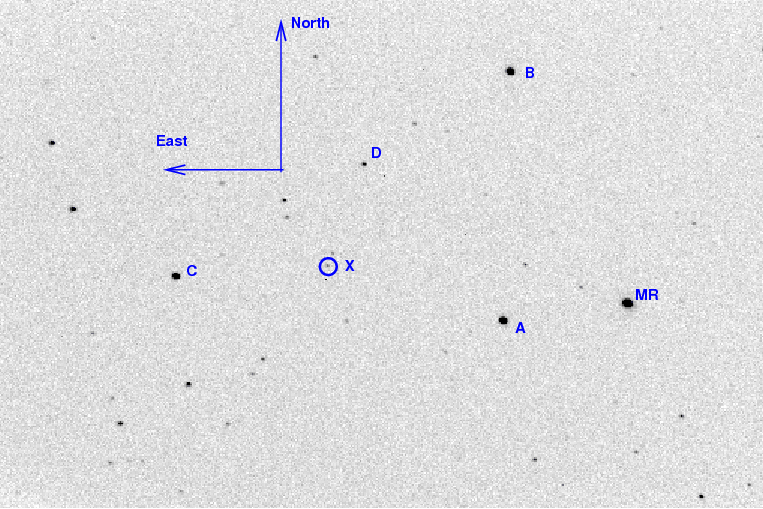
On the night of Aug 25/26, 2009, I observed the eclipsing binary star MR Del. I worked simultaneously in R and I passbands using two telescopes. The night was fair, but suffered from clouds near the end of the run. We caught the full primary eclipse.
The setup was:
Notes from the night
This is a chart of the field taken from the 12-inch V-band images.

The chart has several of the brighter stars in the field labelled with letters, just to keep me straight as I perform the reductions. Stars A, B, C are in the Tycho-2 catalog, with measurements
my label RA Dec Bt Vt
----------------------------------------------------------------------------
A Tycho-2 518-13-1 20:31:24.1 +05:12:50 10.571 9.933
B Tycho-2 518-447-1 20:31:23.5 +05:18:03 10.464 9.728
= BD+04 4471
C Tycho-2 518-639-1 20:31:51.7 +05:13:46 11.577 11.036
----------------------------------------------------------------------------
I measured the instrumental magnitude of each star with aperture photometry, using a radius of 4 pixels = 5.6 arcseconds and sky defined by an annulus around each star. Following the procedures outlined by Kent Honeycutt's article on inhomogeneous ensemble photometry, I used all stars available in each image to define a reference frame, and measured each star against this frame.
One output of the ensemble solution is the value of the zero-point of each frame relative to the others. In the graph below, I plot this zero-point as a function of time. Note the spikes due to clouds late in the run.
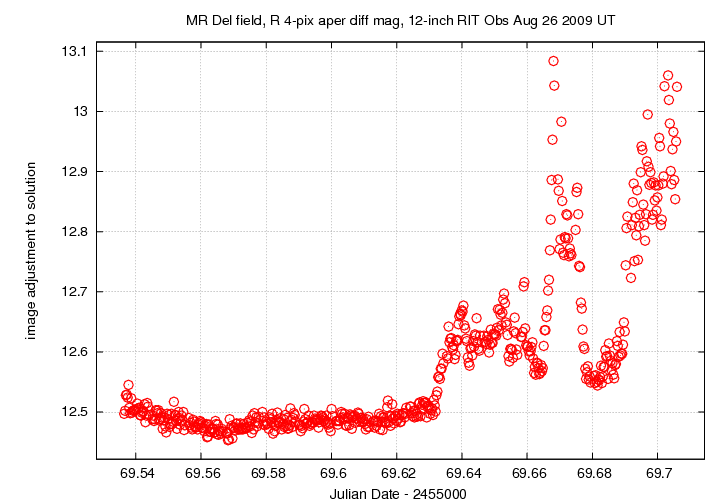
Below is a graph of the scatter in differential magnitude versus magnitude in the ensemble solution.

The floor of this diagram corresponds to a scatter of only about 0.009 mag, which is mediocre. The target (the brightest star) is elevated, due to its variability.
Light curves for selected stars (MR Del and stars A - B plus a few others) in the field are shown below. The target is shown by light green crosses.
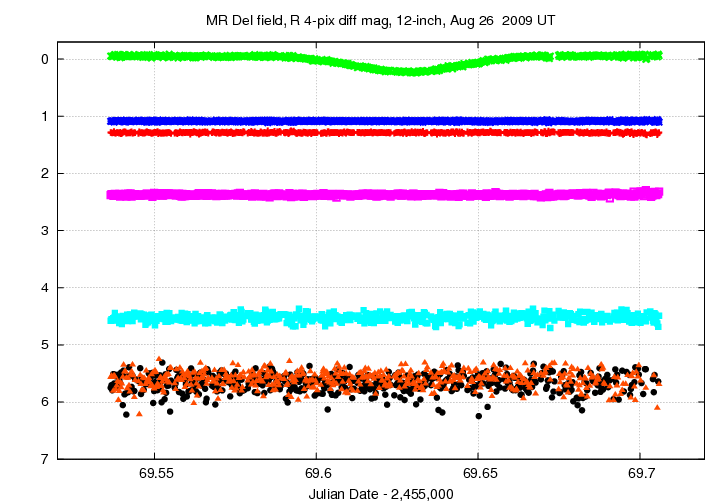
Here's a closeup of the variation in MR Del and a few comparison stars.
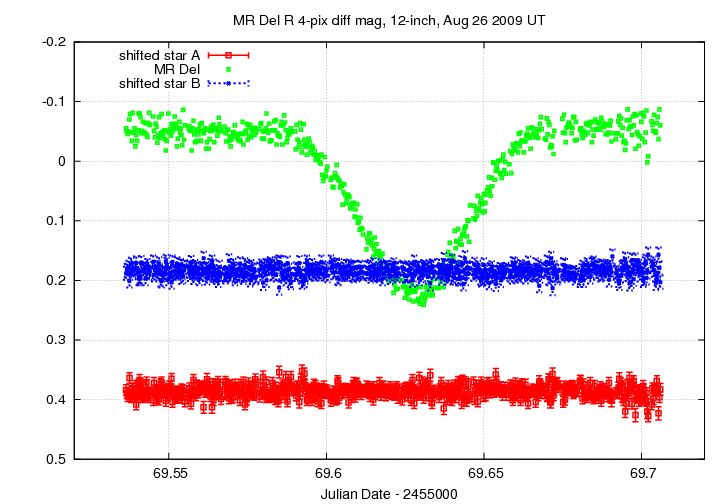
This is a primary eclipse. The depth in R-band appears to be about 0.26 mag.
The field of view of the 14-inch plus ST-9 is much smaller than the 12-inch plus ST-8, but the target and main comparison stars A and B do appear in all frames. I'll select random fainter stars in the field for photometry, just as a check on conditions.
I ran the ST-9 camera at a temperature of 3 degrees C to avoid ice crystals; I'm still searching for a way to hold the camera in a dry environment during the day.
One output of the ensemble solution is the value of the zero-point of each frame relative to the others. In the graph below, I plot this zero-point as a function of time. Note the same pattern and amplitude of extinction due to clouds as seen in the 12-inch data.

The scatter in the measurements of bright stars is about 0.009 mag, again about the same as for the 12-inch R-band measurements. This suggests to me that the limit is set by the atmosphere.

Light curves for selected stars (MR Del and stars A - B plus a few others) in the field are shown below. The target is shown by light green crosses.
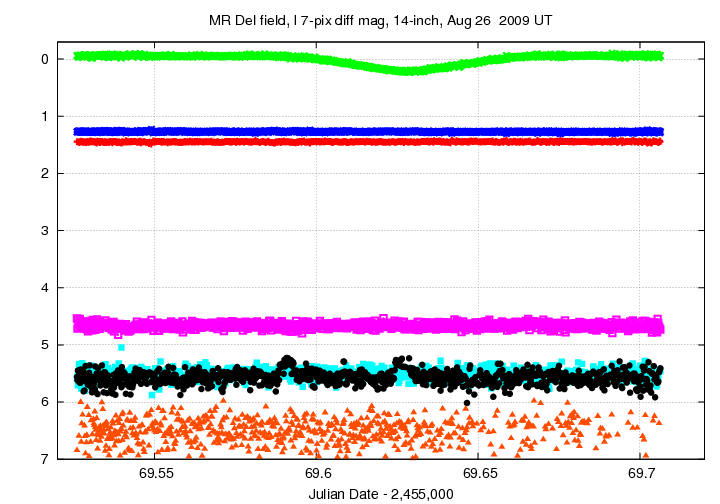
Here's a closeup of the variation in MR Del and a few comparison stars.
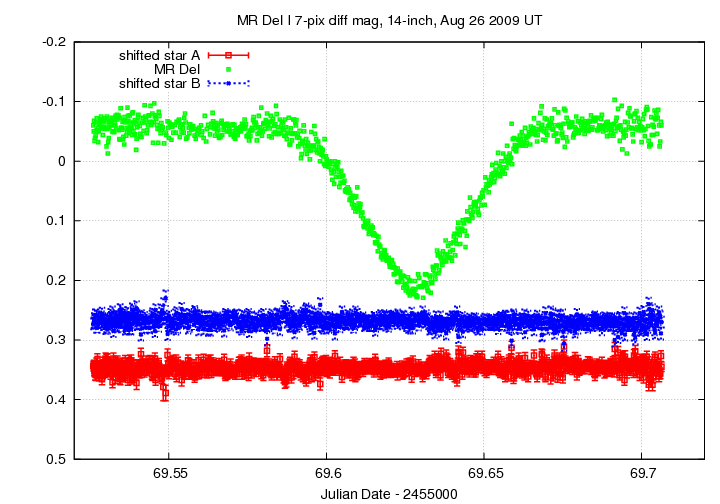
The depth of the primary eclipse in I-band appears to be the same, about 0.26 mag, as it was in R-band tonight. Last night, the I-band measurements indicated a slightly shallower depth. Since last night was better overall, I'd give them more weight.
Last modified 8/26/2009 by MWR.